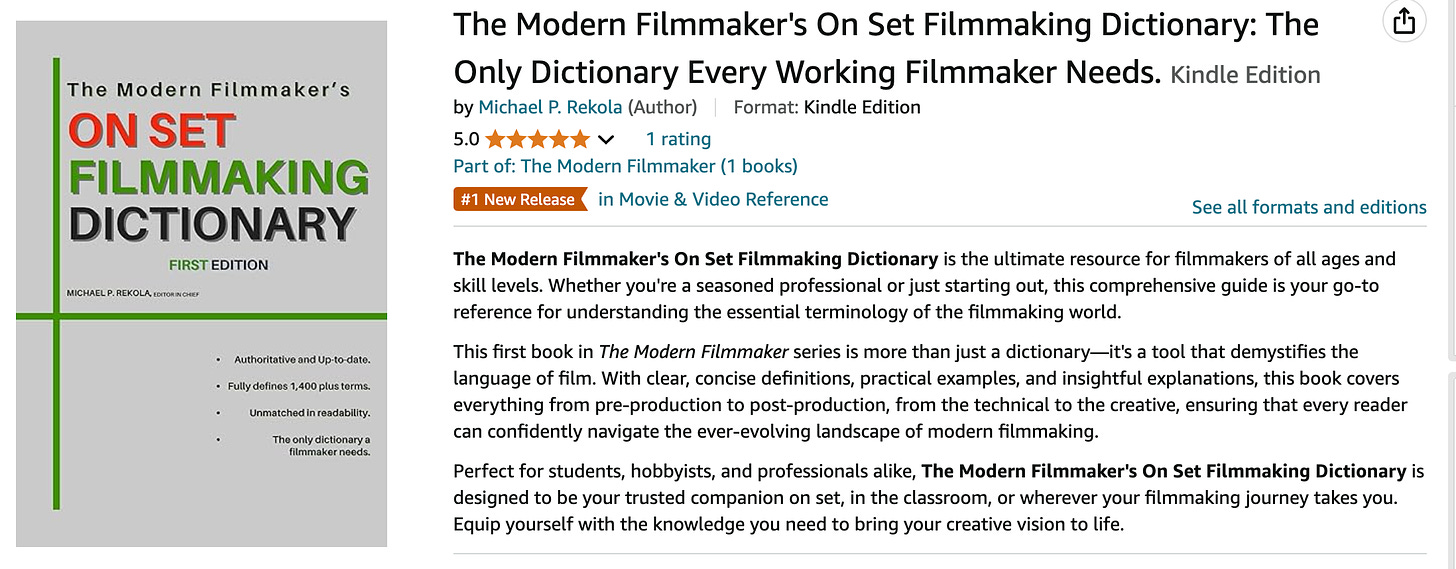
The Mystery of ‘Alan Smithee’ in Filmmaking
In the world of filmmaking, one name stands out not for fame, but for its mysterious and infamous reputation: Alan Smithee.
Unlike well-known directors such as Steven Spielberg or Martin Scorsese, “Alan Smithee” is a pseudonym used by filmmakers who want to disown a project.
For decades, the name has appeared in film credits, often attached to projects where the director felt the final product didn’t align with their vision or standards.
In this post, we’ll explore what “Alan Smithee” means, the history behind the alias, its use in the film industry, and why this strange credit is a crucial term in the filmmaking glossary.
What is ‘Alan Smithee’?
“Alan Smithee” is an alias used by directors and filmmakers who wish to disassociate themselves from a film project. In filmmaking, this pseudonym essentially signifies that the credited director does not want to be publicly associated with the final version of the movie. The name acts as a marker, alerting audiences and industry insiders alike that creative conflicts or production issues may have affected the film's outcome.
Key Points About Alan Smithee:
Pseudonym for Disowned Films: Directors use “Alan Smithee” when they believe the released film doesn’t reflect their creative intentions.
Protects the Director’s Reputation: It allows directors to disown a film without hurting their reputation directly.
Not Limited to Films: The name has also appeared in TV shows, music videos, and even books under similar circumstances.
Originally established by the Directors Guild of America (DGA) in 1968, the use of “Alan Smithee” became an officially sanctioned pseudonym, helping protect directors from potential backlash when studio interference altered their original vision.
The Origins of Alan Smithee in Filmmaking
The story of “Alan Smithee” began with the 1969 film Death of a Gunfighter, directed initially by Robert Totten. Due to creative conflicts, Totten left the project, and another director, Don Siegel, was brought in to complete the movie. As a compromise, both directors agreed that neither would take credit, leading the DGA to establish a unique pseudonym. The name “Alan Smithee” was chosen because it had no prior association with real individuals in Hollywood, making it the perfect blank slate for this purpose.
From that point on, “Alan Smithee” became the go-to pseudonym for disowned projects, allowing directors to separate themselves from films that didn’t meet their standards or were heavily altered during production.
Iconic Examples of Alan Smithee Films
Several films have famously been credited to “Alan Smithee,” each telling a story of creative disagreements, studio intervention, or challenging production circumstances. Here are some notable examples:
Burn Hollywood Burn: An Alan Smithee Film (1997)
Ironically, this mockumentary, directed by Arthur Hiller, intended to satirize the film industry’s interference in creative projects. But when Hiller experienced excessive interference during production, he invoked the Alan Smithee pseudonym himself. The film became an infamous example of Hollywood’s struggle with creative control.Dune (1984) – TV Cut
David Lynch’s Dune faced extensive editing for its TV release, including the addition of narration and extra scenes without Lynch’s approval. Disturbed by the altered vision, Lynch removed his name from the TV cut, and Alan Smithee took his place in the credits. The theatrical version still credits Lynch, but the TV version has since been an iconic example of the “Alan Smithee” phenomenon.Hellraiser: Bloodline (1996)
The fourth installment of the Hellraiser franchise encountered numerous production issues. Director Kevin Yagher experienced heavy interference, particularly concerning edits that significantly altered the storyline. Unhappy with the result, Yagher requested the Alan Smithee credit, distancing himself from the version released in theaters.The Birds II: Land’s End (1994)
As a sequel to Alfred Hitchcock’s iconic film The Birds, this television movie came with high expectations. However, the director, Rick Rosenthal, was dissatisfied with the final cut, as studio interference altered his intended direction. He chose to credit “Alan Smithee,” a move that reflected his disappointment and desire to separate himself from the project.
Why Directors Use Alan Smithee: Key Reasons for Disowning a Film
Directors take pride in their work and often spend years bringing a vision to life. When that vision is altered, distorted, or compromised, many turn to “Alan Smithee” to protect their personal brand and artistic reputation. Here’s why:
Studio Interference
In some cases, studios impose changes on films to make them more marketable or shorter for easier distribution. Directors may feel these changes damage the integrity of their work.Creative Conflicts
Directors and producers sometimes clash over a film’s narrative, casting, or style. When a compromise can’t be reached, and the director’s creative choices are disregarded, they may choose to disown the project.Significant Re-Editing
If a film undergoes substantial re-editing, often for television or international release, the director may no longer consider it a representation of their work and request an Alan Smithee credit.Preserving Reputation
By using the pseudonym, directors can distance themselves from projects that don’t align with their usual standard of quality, allowing them to maintain a positive reputation in the industry.
The Decline of Alan Smithee: Why the Name Fell Out of Use
While “Alan Smithee” became an iconic symbol of directorial disapproval, its widespread use and recognition eventually led to its downfall. By the early 2000s, the name was so well known that it lost its anonymity. With audiences becoming aware that “Alan Smithee” signified a troubled production, the DGA retired the pseudonym in 2000. Directors seeking to disassociate themselves from a project now need to find other methods, sometimes using unique pseudonyms or withholding their names altogether.
Why Alan Smithee Still Matters in Filmmaking Today
Though no longer in official use, the “Alan Smithee” pseudonym continues to hold significance in the world of filmmaking. It has become a symbolic reminder of the ongoing tension between creative freedom and commercial interests. The concept raises questions about artistic integrity and who truly controls a film’s final cut.
For filmmakers, the story of “Alan Smithee” underscores the importance of protecting creative rights, negotiating control, and making strategic decisions when collaborating with studios or producers.
Why ‘Alan Smithee’ Matters in Filmmaking: Key Takeaways
The “Alan Smithee” alias has become an important term in the filmmaking glossary. Here are the main reasons why it’s worth understanding this unique part of film history:
Symbol of Creative Integrity
The pseudonym serves as a reminder of the importance of artistic freedom and the risks of studio interference in the creative process.Insight into Filmmaking Challenges
Knowing the history of “Alan Smithee” can help filmmakers understand the complex relationships between directors, producers, and studios.Informs Contract Negotiations
Filmmakers who understand the risks of losing creative control are better prepared to negotiate contracts and protect their vision.Cultural Reference for Filmmakers
“Alan Smithee” remains a term that connects filmmakers through shared challenges and a common language within the industry.Raises Awareness of Directorial Rights
This pseudonym highlights the importance of maintaining directorial rights in an industry that often prioritizes commercial appeal over artistic vision.
The “Alan Smithee” alias is more than just an industry inside joke; it’s a symbol of the struggles filmmakers face to protect their creative visions.
From its origins in the late 1960s to its iconic status in Hollywood, the name remains a fascinating part of cinematic terms and filmmaking history.
Whether you’re a budding filmmaker or a film enthusiast, understanding the legacy of Alan Smithee offers valuable insights into the complexities of artistic expression and the need for creative control in cinema.
P.S. Catch up on the rest from TheModernFilmmaker.co:
👉 Some Filmmakers to Know: Abbas Kiarostami & John Singleton…
👉 Some Filmmaking Terms to Know: J-Cut & 3-D Glasses…
👉 Some Stories: So there I was… With a Filmmaker Who Lost It All…
👉 Some Thoughts: Cover Your Ass & Your Films with this One Document…
The Filmmaking Dictionary You Didn’t Know You Needed
Now that we’re talking about visionaries, let me tell you about something every auteur should have on set—my Modern Filmmaker’s On-Set Filmmaking Dictionary. It's packed with over 1,400 industry terms that will not only help you sound like a pro but also ensure that every phase of production from development to distribution runs smoother than ever to help you on the terms you need to know.
👉 Get your copy here on Amazon Prime. Seriously, it’s a must-have.








Share this post